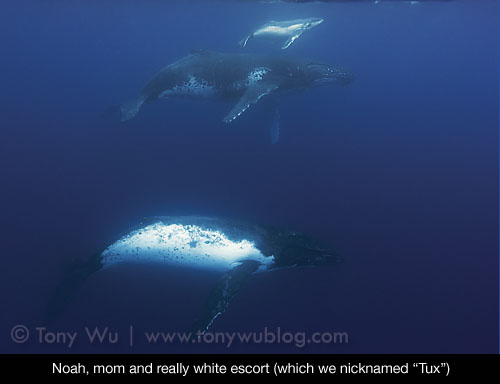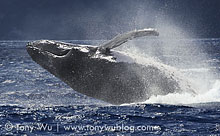 I'm a week behind posting this update. Partially, the delay is due to travel. I was in transit for several days, and I had lots of people to see and errands to run along the way. Mostly though, I haven't felt like writing since I received the news of my friend Ongo's passing. Actually, I haven't felt like doing much of anything, but it's time to get on with life.
I'm a week behind posting this update. Partially, the delay is due to travel. I was in transit for several days, and I had lots of people to see and errands to run along the way. Mostly though, I haven't felt like writing since I received the news of my friend Ongo's passing. Actually, I haven't felt like doing much of anything, but it's time to get on with life.
My final week in Tonga for this season was characterised by wind. Lots, and lots of wind. In fact, the entire season has been windy, such that some areas around the islands have been difficult or nearly impossible to access on many occasions. Sure, there were a few OK days, but it's been the windiest I've ever experienced in Vava'u.
I'm no weather expert, but I think I discern a possible pattern.
The first time I visited Vava'u was in September 1998. The weather was horrific. Cold, wet, windy...miserable. The next time, in September 2002, the weather was just shy of horrific. 2003 improved somewhat. 2004 and 2005 were fantastic. 2006 was ok. 2007 a bit worse. 2008, lots of rain and generally not great. 2009...ripping winds, though much less rain than 2008.
1998-2000 was an El Niño/ La Niña period. A minor La Niña occurred in 2000-2001, and El Niño in 2006-2007, with La Niña following in 2007-2009. Since June 2009, El Niño conditions have formed again in the equatorial Pacific region.
So in my personal experience over the past ten years or so, whenever there's an El Niño/ La Niña event, the prevailing weather and wind conditions go a bit haywire in Vava'u. Conversely, in 2004/ 2005, when there was no El Niño or La Niña influence, blue skies and calm, flat seas prevailed. Perhaps it's a coincidence, or maybe the locally discernable effects of these global weather patterns are magnified because Vava'u is in the middle of the ocean with no major land mass nearby.
I have no idea how long the current El Niño will last, or whether it will be followed by La Niña, but I suppose I'll find out in coming years weather there really is a correlation, or if I'm seeing patterns where there are none.
Counting Calfs
We ended the season with 25 ID-ed calfs...amazingly, the target number I had set relatively early in the season, once I saw the rapid pace of new calf appearances. (03 Oct '09 Note: The finally tally turned out to be 26 calfs that we identified. I initially mis-ID-ed one as Mei Mei. See calf summary for details.)
Our final calf find was during our last day on the water, when we came across a friendly mother and relatively large calf in the afternoon. Fortunately, the pair were resting in a sheltered area (we had been beaten up in rough, exposed seas during the morning), so we were able to spend quality time with the whales.
The calf turned out to be female, and we named the baby Nofo. Naming the calf Nofo was in honour of our close friend Aunofo, but as it turns out, Nofo'a means goodbye in Tongan...so we inadvertently picked a name with an appropriate double meaning.
Calfs ID-ed during our final week:
- Mei Mei: Sighted her three days during our final week, including our initial encounter with the RTHK folks
- Ika: Named for Ongo's eldest son
- Noah: Named for another of Ongo's sons
- Nofo: Encountered on our final day
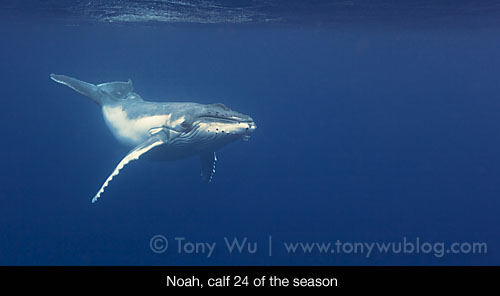 Of course, now the hard work begins, as I have to sort through all of our photos and pick the ones that I'll use in the calf summary I'm going to put together. And then...I have to collate data and actually put the summary together!
Of course, now the hard work begins, as I have to sort through all of our photos and pick the ones that I'll use in the calf summary I'm going to put together. And then...I have to collate data and actually put the summary together!
Adding to the workload will (hopefully) be images and additional data from other people. For instance, on the Monday after I left Tonga, I received an email from Alexis and Nathalie (who were on one of my boats and stayed on for a few days longer) with photos of another mom and baby that neither Takaji nor I had photographed. So that makes the count 26!
Assuming additional data comes in during the rest of the season, we should easily cross 30 calfs. I'll post a summary document as soon as I can, and update it as and when more photos and IDs come in.
Jumping back a bit in time...one of the main reasons Takaji and I started doing these calf counts is because we didn't believe the generally accepted view that between six to eight calfs visited the waters around Vava'u each year. Our initial informal tallies during the 2004/ 2005 seasons led us to believe there were dozens, not a handful, of babies each year. Still, everyone we asked either had no opinion, or insisted that there were only a few calfs.
Our experiences in 2006 and 2007 reinforced our view, so beginning last year, we decided to document the calfs we encountered. By using photographs of mother and calf pairs, we were able to establish definitive IDs for many calfs, and therefore come up with a rigorous tally, which we're happy to share with anyone who's interested.
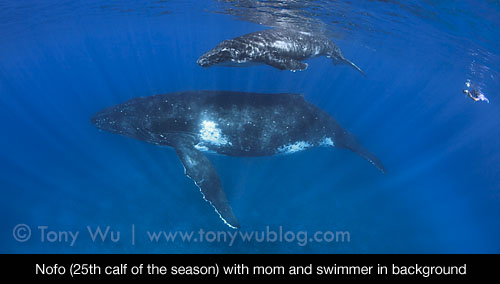
In 2008, we ID-ed 14 calfs around Vava'u (plus an additional two at Toku Island). We spent a total of 66 boat-days on the water (that's excluding one boat-day at Toku), so that's 14 calfs in 66 days = 0.21 calfs/ day.
This year, we ID-ed 25 calfs in 59 boat-days on the water (again, excluding one day at Toku), which = 0.42 calfs/ day.
Of course, this isn't a strict, variable-controlled measurement, but 0.42 vs 0.21 provides a fairly accurate reflection of the difference between 2009 and 2008, at least for the August/ first half of September period.
In short...despite the strong winds and relatively difficult conditions this year, we saw lots of baby whales (as did most everyone else who visited Vava'u this year).
What does this mean? I hesitate to extrapolate too much, but I think it's fair to say that the common wisdom was flat-out wrong.
In addition, the fact that we documented the return of a humpback whale mother this year that was in Vava'u least year, suggests that another piece of oft-stated "wisdom" may be in error. There are people who insist that the presence of humans in the water is scaring humpback whales away. These people say that there are fewer whales in the area, and that the ones that do come to Tonga stay farther away from Vava'u than before.
Instead of arguing the point (which in the interest of being completely open...I think is a load of ****), it's best to let the whales do the talking and let the facts speak for themselves. They're returning to Vava'u, and even having babies repeatedly in the area, so they can't be all that put off by the presence of a few ungainly swimmers in the water.
Travel Silliness
Anyone who travels frequently probably has a lot of "stupid travel stories". I certainly do.
Just to add one to my ever-growing list...on the way back from Vava'u, we had a day in Nukua'lofa. We stopped off to see one of the handicraft vendors I've known for a while, and we picked up a nice wooden carving of a whale. It's somewhat big, but not too large to carry, and it's light, so we figured we could carry it on the plane.
When we reached X-ray at the airport, one of the security guards told us that we could not take the whale on the plane. When I asked what the problem was, he said: "It's a weapon."
Pause about five seconds for me to process that statement...and then I said: "Actually...it's a whale. A nice, friendly one.", smiling for emphasis.
"No. It's a weapon. You should know you are not allowed to carry weapons on board. We will have to detain you."
"It's actually a whale. Here. Take a look."
"No. It's a weapon."
"Ummm, it's a whale."
"No. It's a weapon."
You get the idea.
So after all was said and done, we convinced the hyper-vigilant security guard to let us check the weapon whale in, thereby averting the possibility of a renegade wooden whale taking over the plane mid-flight.
Crisis averted.
Shortly after we boarded, we were served a meal, complete with...metal knives and forks. Good thing the whale wasn't on board to make use of the utensils for nefarious purposes.
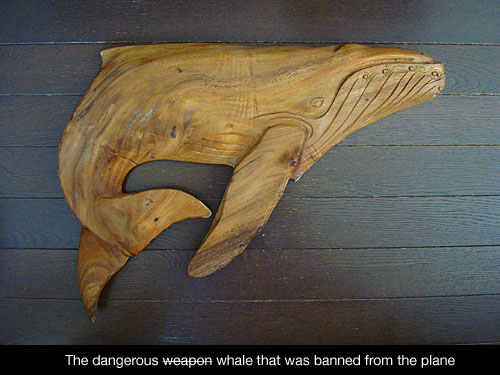
Wrapping Up
There are more things I want to write about, but it's probably better for me to put them off until I'm in a better mood.
Our 2009 humpback whale season was, as always, action-packed. Besides the many whales we saw, the calfs we documented, the strange trill sound we recorded, the whale poop I swam through, the whale dandruff I collected and the injured whale we encountered...we swam with tiger sharks, bronze whalers, sailfish, barracuda, spinner dolphins, pilot whales, large jellyfish, a manta ray (that actually spooked a whale...it was quite funny) and more stuff that escapes my immediate recollection.
All told, 45 people from around the world joined us this year to swim among and learn about humpback whales. We took 15 +/- students from Vava'u High School into the water to see a mother and calf up close. We donated school supplies to a school for handicapped children and schools on outlying islands. We spent time with some of the best friends we have anywhere in the world. And sadly, we lost a dear friend.
Finally...to everyone who joined us this year...thank you for being such wonderful travel companions.
I'll post my schedule for 2010 in a few days, so if you're considering joining us next year, check back soon!
